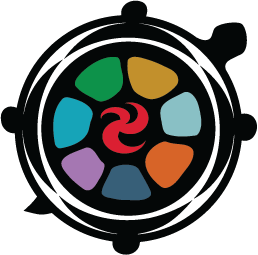About the NIFSC
for us, by us
The National Indigenous Fire Safety Council (NIFSC) is committed to ensuring that Indigenous communities have equitable access to fire safety services, training, and infrastructure, leading to the elimination of fire and mitigatable incidents, improved emergency response, and strengthened community resilience.
What is the mission of the NIFSC?
The NIFSC is dedicated to eliminating the loss of life and property from all fire-related and mitigatable threats in Indigenous communities.
Our work is guided by five core values:
Respect for Indigenous Knowledge & Culture
Community Empowerment
Collaboration & Partnerships
Accountability & Transparency
Commitment to UNDRIP & Truth and Reconciliation
The NIFSC was created by the Aboriginal Firefighters Association of Canada (AFAC)
The AFAC Board of Directors was committed to the inclusion of all Indigenous Peoples, which was central to the development of the National Indigenous Fire Safety Council (NIFSC). On April 1, 2022, the inaugural NIFSC Board of Directors was established in place of AFAC.
The governance goal of the NIFSC shall be governed by an Indigenous-led council, with representation from First Nations, Métis, and Inuit communities, ensuring that decision-making reflects the needs and priorities of Indigenous peoples across Canada.
The NIFSC is guided by the following goals:
Develop and implement national fire safety standards tailored to Indigenous communities.
Provide culturally relevant fire prevention and emergency response training.
Advocate for sustainable funding and policy changes to improve Indigenous fire services.
Conduct research and data collection to support evidence-based decision-making in fire safety.
Support Indigenous communities in disaster preparedness and emergency management.
NIFSC Annual Reports
How Does the NIFSC Work?
The NIFSC is responsive, meaning as a community’s capacity increases, the programs offered will become more sophisticated.
In 2019/20, the main effort of the NIFSC was to receive input from Indigenous communities. What we heard is that change is wanted, change is needed. The NIFSC team is working to bring about that change in collaboration with communities and existing organizations. The NIFSC team continues to reach out to constituents to seek feedback on programs as they are developed.
NIFSC Team
Who is involved in the National Indigenous Fire Safety Council?
The National Indigenous Fire Safety Council is dedicated to providing Indigenous communities with the tools needed to be healthy and safe. It is made up of a team that is supported by the NIFSC Board of Directors, a National Advisory Committee (NAC), and a Technical Advisory Committee (TAC).
NIFSC Board of Directors
Assembly of First Nations - Vacant
Metis National Council - Erin Myers
Inuit Tapirit Kanatami - Vacant
FNESS - Anthony Moore
TSAG - Vacant
PAGC/SKFNEM - Michelle Vandevord
MAFC - Vacant
ONFFS - Melvin McLeod
QFNFC - Billy Moffat
NBNFA - Allan Peters
Yukon - James Smarch
Wildfire - Ashley O-Neil
NIFSC Executive Director - Announcement Pending
Technical Advisory Committee
The role of the Technical Advisory Committee (TAC) is to provide the NIFSC team with technical advice on the development and delivery of fire safety programs. It is made up of professionals working in the fire safety industry. The role of the advisory committee is to support the establishment of national indigenous fire service standards, support the direction and parameters of research, identify emerging public safety issues and provide a national forum for Indigenous fire service to collaborate and share information. The TAC is the first forum that allows all Indigenous fire service organizations to collaborate.
TAC Standing Organizational Members:
First Nations Emergency Services Society
First Nations Technical Services Advisory Group Inc. (Alberta)
Saskatchewan First Nations Emergency Management & Protective Services
Ontario First Nations Technical Services Corporation
First Nations National Building Officers Association
Nunavut Fire Marshal
Assembly of First Nations
National Indigenous Fire Safety Council
